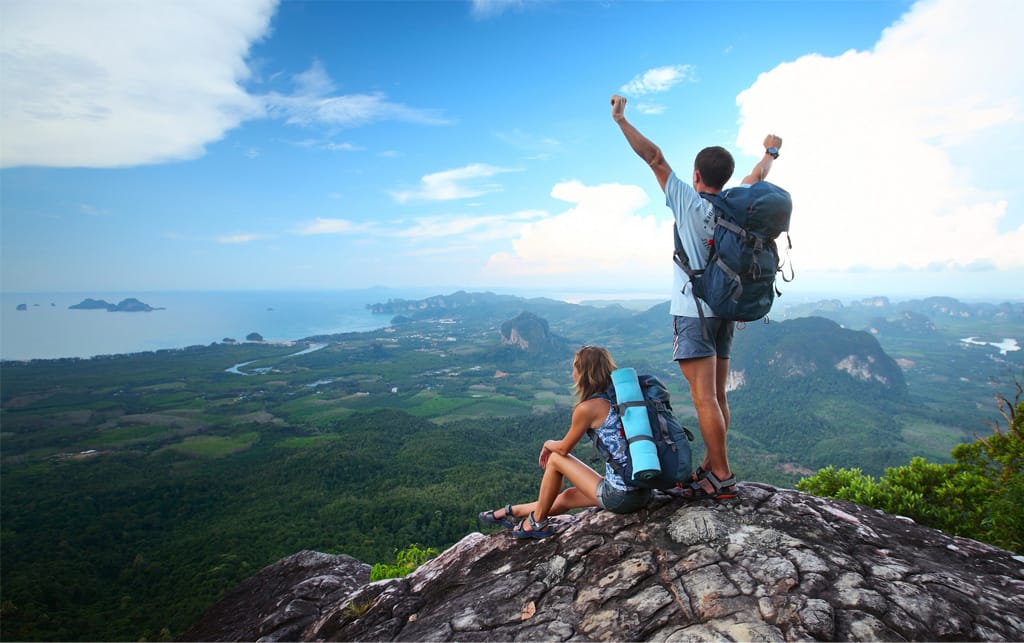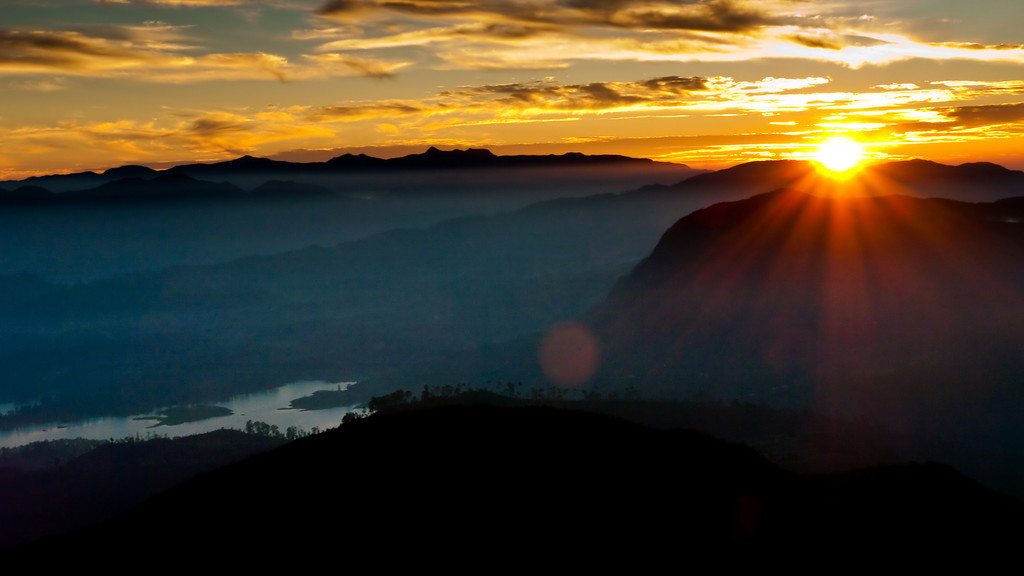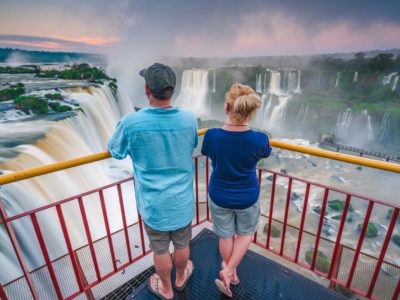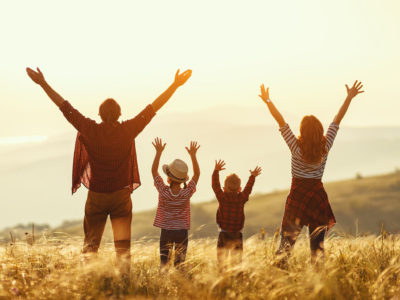“Dude, let’s throw some stuff in our backpacks and go hiking, we could be there tomorrow”, my visibly excited friend Pete exclaimed.
We were sipping on our chilled New Glarus beers in a small coffee shop in Grindelwald, Switzerland and listening to a friend, Luca, who we had just met, going on and on about this beautiful First to Schynige Platte trail in the Swiss Alps. This hiking adventure was for us!
And we did just what Pete suggested, within a half a day we were on a trail with only a few things thrown into our backpacks. Oh, the horrors of inexperience.
Table of Contents
How to Stay Safe on a Hiking Adventure
This was decades ago, and I still remember that hike as one of my worst ever. Not to get into the nitty-gritty of everything we did wrong, but the trip was a disaster.
And now I am sitting here, hitting these plastic buttons so that I can get a message over to you, a novice hiker, on the DOs and DONTs of a hiking adventure.
So, let’s dig in…
1. Be diligent now so that you relax later – my list obsession

It was after that hike in the Alps that my “list obsession” started. In the years to come, before every hike, I would make a list of everything I need to do and prepare before I set foot on that trail.
I would block out the rolling eyes and the sighs of my friends, take my time and calmly put together THE LIST.
I was quickly becoming known as the dull one in the group, but I didn’t mind.
I didn’t mind because I was the one who, on the trail, was able to relax, breathe in the fresh mountain air and the beauties of the trails, only occasionally interrupted by the tired voices of my friends asking me if I had a Band-Aid or an extra bottle of water.
The list soon became engraved in my brain, and I didn’t need to actually put it on paper, but it was one of the good habits that made all the difference. I was always the best-prepared person in the group.
2. Think height, not distance

A common mistake amongst the newbie hikers is to judge the difficulty of the trail by its distance.
What the years have thought me is that the length of the trail speaks much less about the difficulty than the difference in height between the start and the finish point.
You might dismiss this thought the moment you read it but before you do, ask yourself one thing – why do the signposts on the most serious trails show hiking times, not distances.
3. Start early

In my early days, hikes would often feel like a school field trip.
On holidays and weekends, the most popular trails will have people walking in squared columns. If you were ever in a situation like this, think back and try to remember what you enjoyed most about the hike.
It’s very likely that the first thing you’ll remember is the thought, “Let’s get this over with.”
4. Make sure you know how to read a Top map and use a compass

I know, I know, you have a GPS, and you have the signposts, but a true hiker will learn how to read a Topo map and how to use a compass.
It will make your experience more pleasurable because you’ll feel more like a real adventurer and more connected to the nature surrounding you.
More importantly, it can save you from getting lost.
Yes, I’ve seen it happen to people with GPSes, too.’
GPSes are not reliable in the backcountry. It is very important to learn how to navigate with a map and compass.
5. The Apple Pie effect

Just before I leave for my hike, I take a minute or two in the privacy of my bedroom, sit on the floor, breathe deeply and repeat the thought, “Today, I’m not going to think about my problems.”
I’ve had this before-I-go ritual for as long as I can remember, but it’s just recently that I started calling it the Apple Pie effect.
If you’ve seen Men in Black 3, you can probably understand what’s the idea behind the name.
You’ll agree that these days we go through our lives on autopilot.
I know too many people walking the trails and talking about the stock market. That’s a wasted day and a wasted hike.
If you don’t feel calmer and have a changed perspective on your life and problems at the end of the day, you’re doing something wrong.
Hiking is about getting away from the rat race.
If you are having problems with letting go and need a rational reason to do it, know that your brain is working on the solution to your problems even when you are not actively thinking about them.
If you haven’t seen Men in Black, let me explain the gist of what I’m talking about.
There’s this scene where the two main characters chasing a guy who is out to destroy the planet (as they always are in these movies) take a moment to go to a diner and eat some apple pie.
They talk about things completely unrelated to the problem at hand, but the solution simply comes to them through the conversation.
My point is, your body is on that trail, but your mind might still be in the office. Condition it to leave the office and follow you into the wilderness.
6. Prepare like a pro and expect the unexpected

Aunt Hypothermia is disciplinarian like no other. Trust me, I’ve learned this the hard way.
Small tweaks to your preparation can make all the difference on the trail:
- make sure you know the basics of the trail and what you might expect
- think of a worst-case scenario and what you might do if, God forbid, it happens
- research the weather “moods” of the trail and come prepared, no matter what the weatherman predicted for the day
- rain gear and a hat are hiking essentials, don’t let anybody tell you otherwise
My backpack almost always includes these essentials:
- a headlamp
- an emergency whistle
- a water purifier
- a firestarter (waterproof)
- duct tape
- My trusted multi tool
- Anything beyond that depends on the trail I’m taking on.
Check out: 8 tips for Safe and Comfortable Winter Trekking
7. Your feet are your best friend

If there’s one thing that I’ve seen ruin hikes it’s not choosing right when it comes to hiking boots or shoes, whatever the trail calls for.
This is especially true for a novice hiker.
Again, do your research on the trail, what kinds of terrain conditions you are facing and what the best hiking shoes, boots or sandals for the trip might be.
Make sure you work in your hiking boots before you trek. New boots can cause blisters and foot pain. Take your boots out on many test hikes before the big hike so they fit like a glove to your feet keeping them warm and comfortable.
You want to think about the beauty of what’s around you, not your painful blisters or cramps.
8. Finish like a true hiker

I have the “Apple Pie” to kick off the trip and I have a post-hike ritual to celebrate the day.
It keeps that feeling of joy and achievement going long after the hike is finished.
It can be anything from a few cups of hot chocolate or beer to a plenteous dinner with your fellow hikers or family.
No matter how tired you are, when your hike is finished, and you start thinking about the post-hike, it gives you a burst of energy.
If you haven’t tried it, your next hike is a chance to give it a go. It rounds up a pleasant day outdoors perfectly and brings it to a perfect closure.
At the end of the day, deep, refreshing sleep is guaranteed.
Final thoughts
I hope that this guide on getting the most out of your adventure has a little something for everybody, from a novice to an experienced hiker.
For a novice, I hope it can even serve as a reference to taking your experience to whole new level and for the more experienced ones – I’m happy if I provided small bits to think about and use to spice up your next adventure.
Safe trails
This post was originally written by James Menta, an aged hiker and camper turned blogger. He no longer blogs, but the tips are still important so we kept it on The PlanetD
Read Next: Hiking the Wild Coastal Travel of Pukaskwa National Park




These are some real great advices. I’ve a couple of hundred hiking trips behind me, and most of these tips would be my first thoughts too if asked by a newbie. And always have an extra pair of socks.
Such an insightful article. I love hiking, so I would like to add my 2 cents here. It’s always advisable not to overlook the safety in a hiking expedition. Many of us ignore this thing, and act casually. I have even seen people forgot to carry basic essentials like a lightweight backpack, a torch etc in a hiking trip. That is not good at all. Anyway thanks a lot for the piece. Much appreciated!
Fulfill information. There is no doubt hiking is one of the most exciting outdoor activities. 1-8 all tips were so good. Thanks for sharing.
Thank you for the tips. My friend and I also love to do trekking and hiking. Your tips are on point. We never knew exactly what is going to happen in our trail.
Very Helpful Post Dave And Deb. Tip No.3 goes on top of my list.
A whole bunch of valuable tips for the budding hiker here! We are always amazed at the lack of preparation people put in prior to hitting the trails. The most obvious is, of course, the poor clothing choices but worse still, inferior footwear.
So well said! Thanks for this useful summary!
Cheers! Thanks for stopping by.
Enjoyed the read, thanks for sharing
I would love to try hiking one day. Thanks for the tips though and will bookmark this webpage for future reference when I have enough strength to try the activity. LOL.
Hi,
I love to do trekking. I did when I was kid at near by hills. But for a big adventure trip, I should first do some basic course which includes learning of tying knot.
But will do one Day!
Robin
Simple thoughts but pretty important. Today adventure is something people should take up to get away from their non-stop lives. Need to tune off. Keep the adventures going!
Helpful article 🙂 Thank you for sharing it.
I completely agree — preparation is key and having the right attitude for hiking is essential. But point number 7 is definitely the most important — your feet are everything when you’re hiking. My husband’s shoe recently broke while we were doing a Camino de Santiago, and he didn’t fix it properly, which caused huge problems for the rest of the hike and for weeks afterwards. I don’t think he’ll be making that mistake again.